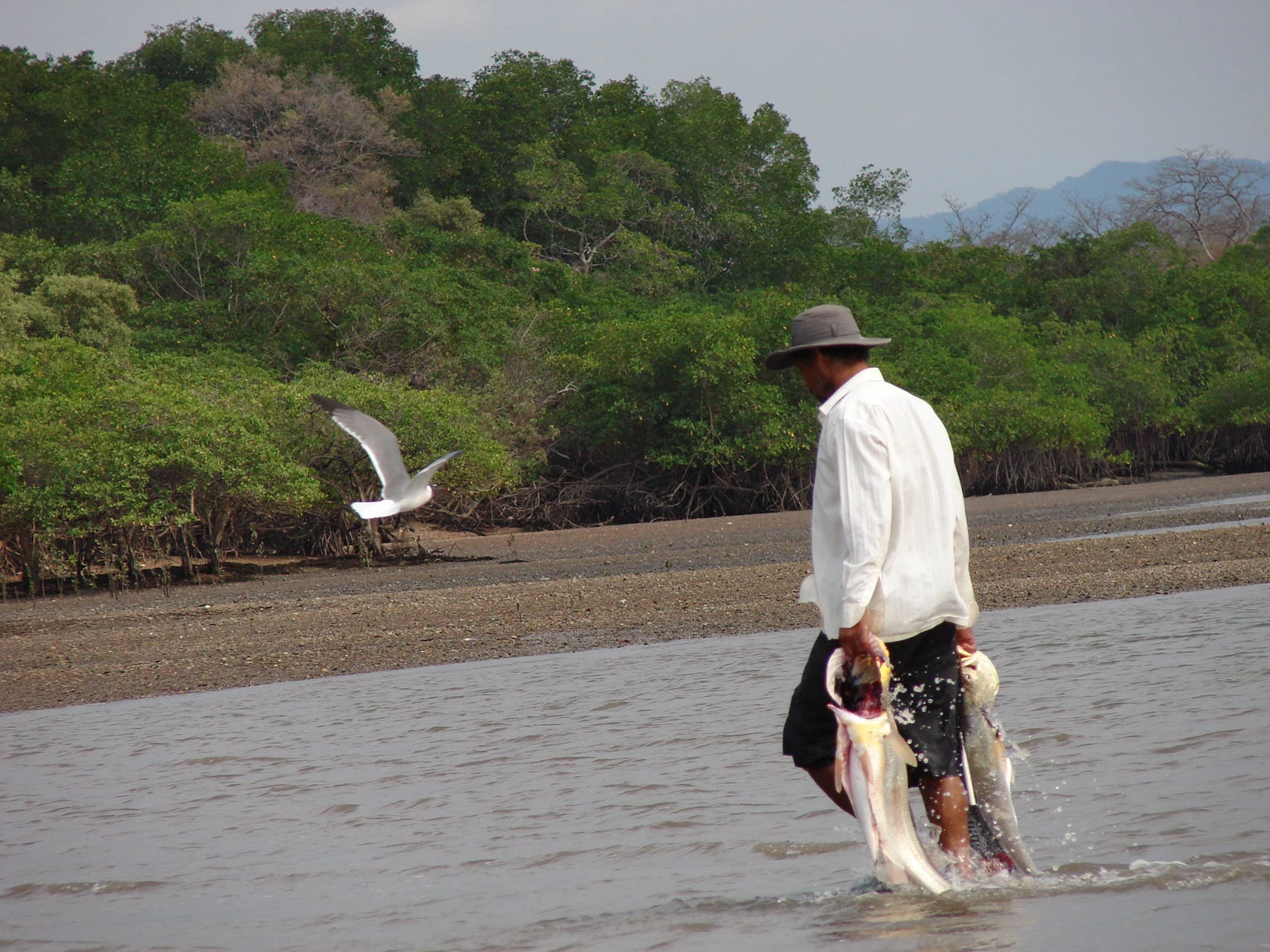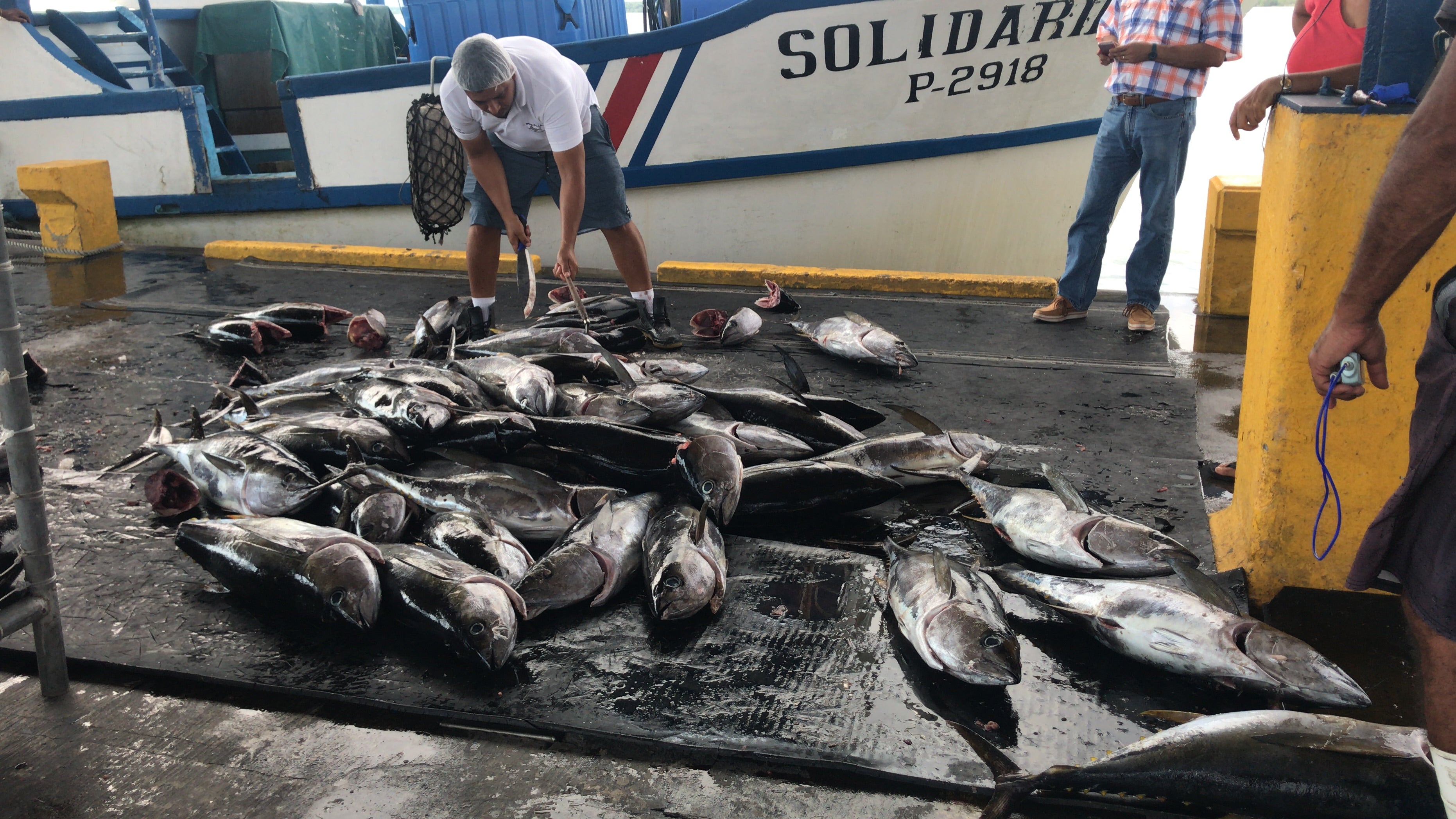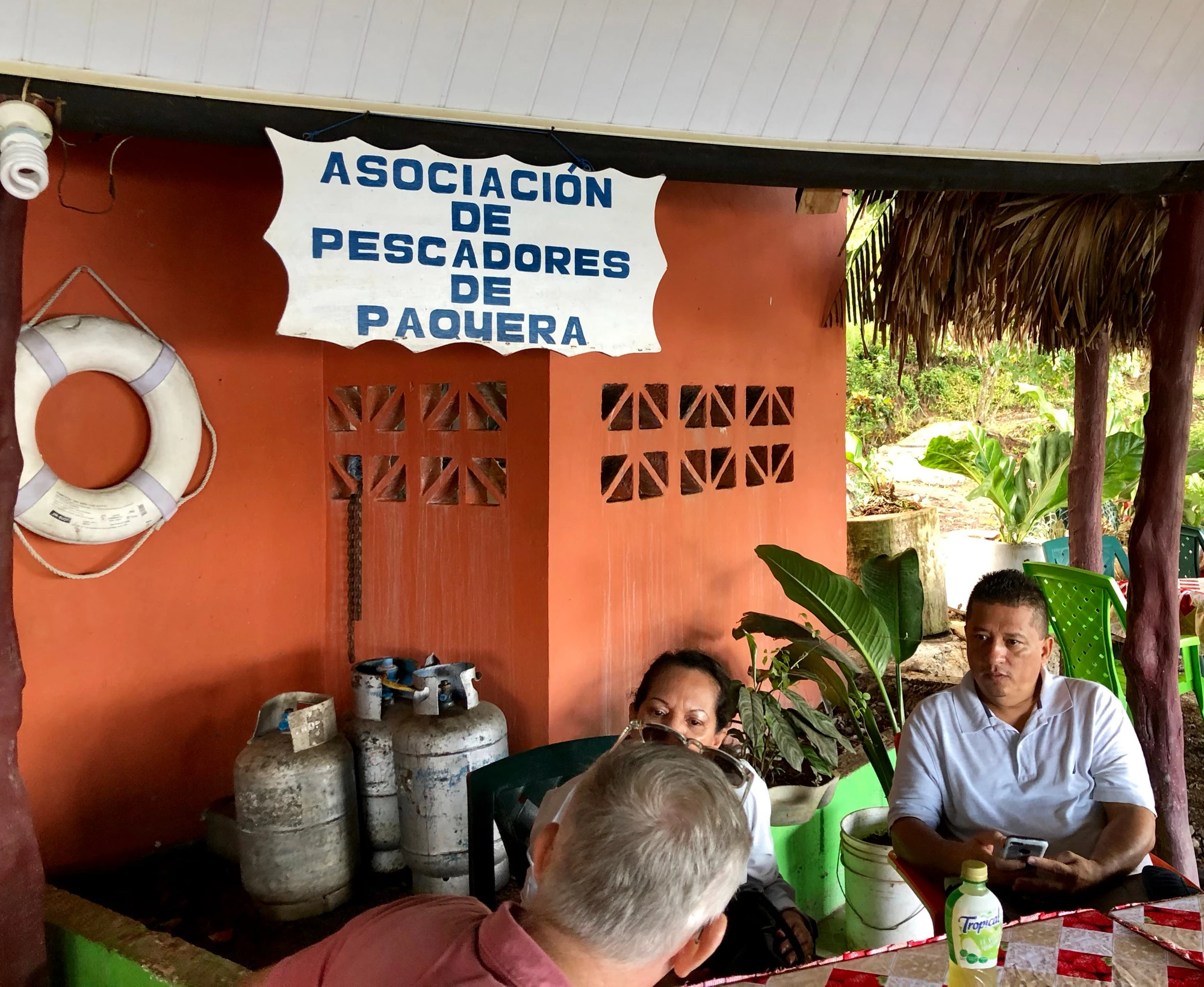 Pescador en Isla Chira, Costa Rica. Cynthia Flores Mora/ Banco Mundial
Pescador en Isla Chira, Costa Rica. Cynthia Flores Mora/ Banco Mundial
Let’s talk about a Blue Costa Rica.
Costa Rica has always had ambitious economic, social, and environmental goals. Known for its global environmental leadership, including its Green Trademark, Costa Rica’s extensive Natural Protected Areas system and pioneering Payment for Environmental Services Program have been successful in promoting nature conservation on land. It is one of the few tropical countries to have reversed deforestation.
But Costa Rica is also a coastal country. With the benefits and challenges of two coastlines -on the Pacific Ocean and the Caribbean Sea- and a marine area over ten times its land area, Costa Rica is rich in living marine resources that can boost economic growth and shared prosperity.
Yet fisheries and aquaculture represent a small and declining share of the country’s economy — accounting for about 0.3 % of its GDP. While other sectors have expanded, capture fisheries has contracted due in part to overfishing along the coast. The sector employed more than 8,300 people in 2015, 50 % fewer than in 2013.
In contrast, many offshore fish resources in Costa Rica’s Exclusive Economic Zone (EEZ), like tuna are relatively abundant. In recent years, Costa Rica licensed foreign purse seiners to fish in their waters generating approximately $200,000 annually in public revenue while the landed value of the fish has reach up to US$70 million/year. The domestic fleet of about 400 smaller vessels captures sharks, swordfish, marlins and tuna. Redirecting this fishery to focus on tuna while avoiding more vulnerable species like sharks along with smarter agreements with foreign fleets could make fishing jobs more sustainable and open new markets, while also enabling a better path toward effective governance and management of the sector.
The potential for sport fishing and related ecotourism also has room for growth if well managed and could well be a turnkey to reducing poverty for coastal communities seeking alternative “blue” incomes to commercial fishing.
Costa Rica has already begun a robust response to the challenges it faces. The fisheries agency, INCOPESCA has stressed that the country needs to regain control of its own marine resources in both the Pacific and the Caribbean, in part by creating a clear plan for sustainable fisheries that takes advantage of Costa Rica’s rich waters for the benefit of all stakeholders involved. One important step was the establishment in recent years of community-led responsible fishing areas. But many more tasks remain at hand to unlock the potential of sustainable fisheries and harness the country’s blue natural capital for long-term gains and inclusive economic growth.
The World Bank is supporting Costa Rica as it improves the management and governance of its fisheries in an inclusive manner. The $90 million Sustainable Fisheries Development Project under development by INCOPESCA, with Bank support, aims to transform fisheries into a sector that spreads development benefits across society. It will be broadly based along both coasts, targeting both coastal and oceanic fishing communities. The project’s three components include: strengthening the governance and management of fisheries resources; investing in sustainable value chains, market development and key infrastructure; and strengthening support to fishing families, communities, as well as efforts to steward critical marine ecosystems to help rebuild fish stocks.
As partners supporting Costa Rica’s sustainable future, we look forward to charting the waters to make this green leader a blue leader too : a Costa Rica that fosters sustainable fisheries, tourism, and aquaculture while protecting the natural marine assets these sectors depend on.
|
From the fishermen communities On a recent visit to Costa Rica, we were thrilled to see more than a glimmer of hope for fishing, a vital sector that is in great peril all over the world. During our travels, we met with a new cooperative of fishermen and women who have brought together their talents and experiences to combat overfishing and create alternative work and complementary incomes. Called “CoopeProMar,” the group has become much more than a fishing association. They manage their own fishing area, including oversight, create regulations, and support the establishment of seasons. The cooperative is creating its own sustainable management plan for its area, one that can help bring back fish and help revitalize the sector. Another critical aim of CoopeProMar is to improve the marketplace for fish and marine products locally. Since then, the cooperative has worked to strengthen markets and value chains in the towns of Playa Blanca, Paquera, and Tambor. This is a critical move toward securing the future of fishing for communities. Puntarenas has long been a central and vibrant hub of fishing on the Pacific Ocean. Families and communities rely on fish for their food and livelihoods, as well as tourism, as vacationers are attracted by the languid beauty of the expansive oceanfront and fishing opportunities. But members of fishing associations also shared their concerns with us—warmer waters, illegal fishing, and the need for more diversified and competitive value chains. These days, CoopeProMar forges ahead, undeterred by the challenge coastal fisheries face. Cooperative members have already mapped out a long-term project to support their aims—including the construction of a seafood processing plant and packing center for Nicoya Peninsula. |





Join the Conversation